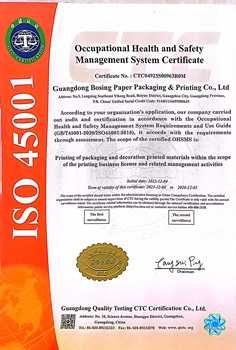In today’s competitive pharmaceutical landscape, tablet packaging boxes serve as more than just protective containers—they are powerful brand ambassadors that communicate quality, safety, and trust. The humble tablet box has evolved from a simple storage solution to a sophisticated marketing tool that bridges the gap between pharmaceutical companies and consumers. With increasing emphasis on user experience and brand differentiation, manufacturers are recognizing that packaging design can significantly influence consumer perception and medication adherence.
The primary function of tablet packaging remains protection and preservation. These boxes must safeguard medications from environmental factors like moisture, light, and physical damage while ensuring product integrity throughout the supply chain. Modern packaging solutions incorporate advanced materials with barrier properties that maintain optimal conditions for pharmaceutical stability. Child-resistant features and tamper-evident mechanisms have become standard requirements, reflecting the industry’s commitment to patient safety. The structural design must also facilitate easy storage and handling, making medication management convenient for users of all ages.
Beyond functional requirements, tablet packaging serves crucial informational purposes. Regulatory compliance demands clear labeling of drug composition, dosage instructions, expiration dates, and potential side effects. However, forward-thinking companies are transforming these mandatory elements into user-friendly communication tools. Through thoughtful typography, color coding, and intuitive layout, packaging can enhance medication comprehension and reduce administration errors. Many manufacturers now incorporate QR codes that link to digital resources, creating interactive experiences that extend beyond the physical package.
The aesthetic dimension of tablet packaging represents a significant opportunity for brand differentiation. Color psychology, logo placement, and material selection all contribute to creating memorable brand identities that resonate with target audiences. Premium finishes like spot UV coating, embossing, and foil stamping can elevate perceived value, while sustainable materials appeal to environmentally conscious consumers. The unboxing experience itself has become a focus area, with innovative opening mechanisms and interior organization systems that demonstrate attention to user convenience.
Sustainability has emerged as a critical consideration in tablet packaging design. The pharmaceutical industry is responding to environmental concerns by developing eco-friendly solutions that maintain protective qualities while reducing ecological impact. Recyclable materials, biodegradable options, and minimalist designs that minimize waste are gaining popularity. Many companies are implementing lifecycle assessments to optimize packaging environmental performance, aligning with global sustainability goals and consumer expectations for corporate responsibility.
Technological integration is revolutionizing tablet packaging capabilities. Smart packaging incorporating NFC chips, RFID tags, and augmented reality features enables track-and-trace functionality, authentication, and enhanced user engagement. These technologies help combat counterfeiting while providing valuable data throughout the supply chain. For patients, connected packaging can deliver medication reminders, usage instructions, and adherence monitoring, transforming passive containers into active healthcare partners.
The future of tablet packaging lies in personalization and accessibility. As healthcare moves toward more patient-centric models, packaging is adapting to individual needs through adjustable dosage systems, braille labeling for visually impaired users, and age-appropriate designs for pediatric and geriatric populations. The integration of universal design principles ensures that packaging remains functional for users with varying physical abilities, promoting medication independence and improving quality of life.
In conclusion, tablet packaging boxes have transcended their traditional role to become multidimensional assets that balance protection, information, branding, sustainability, and technology. The most successful packaging solutions recognize that every interaction with the medication—from first purchase to daily use—represents an opportunity to reinforce brand values and support patient wellbeing. As pharmaceutical companies continue to innovate, tablet packaging will undoubtedly play an increasingly vital role in shaping healthcare experiences and outcomes.




Leave a Message